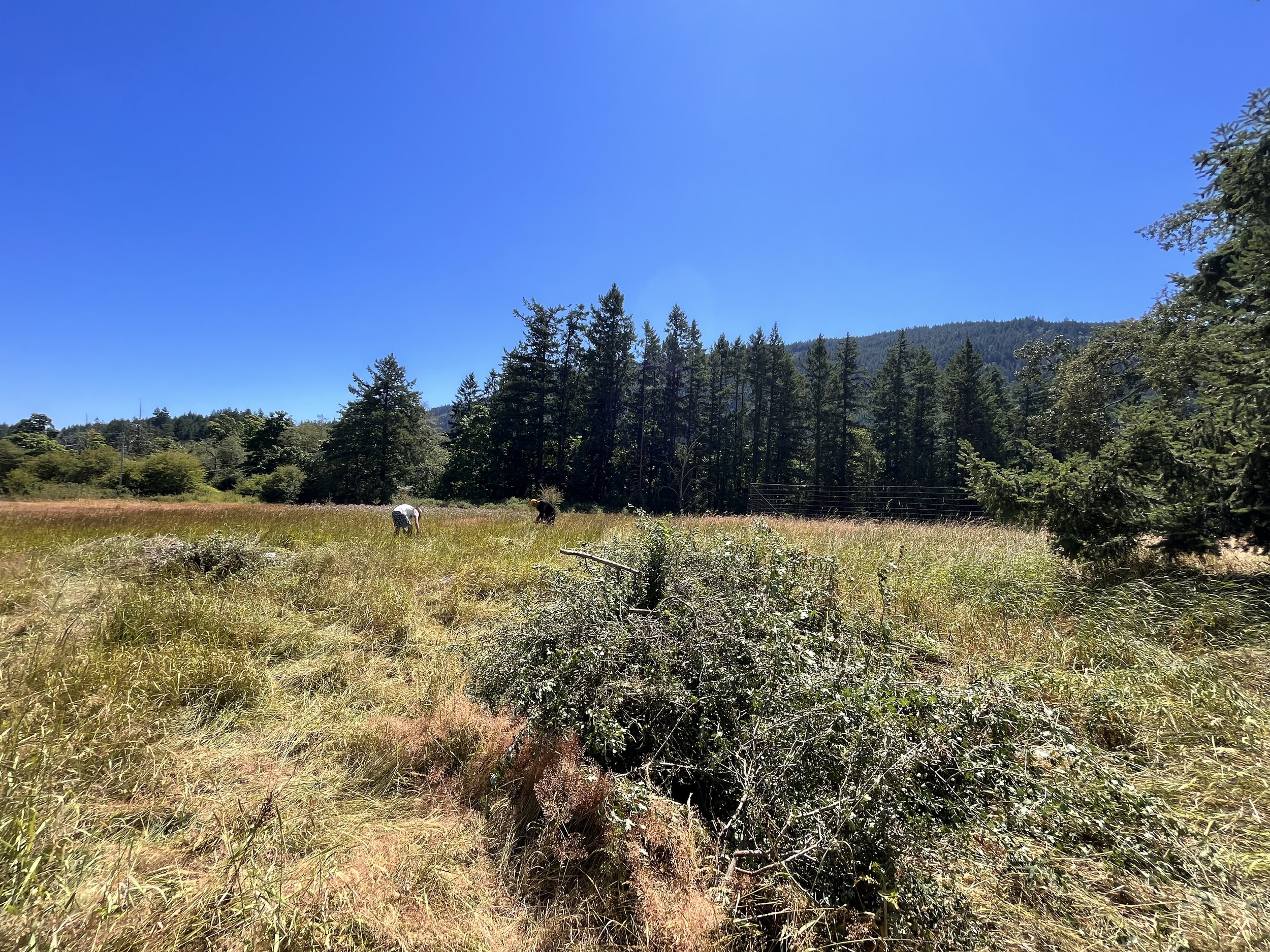Life history of English Hawthorn at Xwaaqw’um
Hawthorn hand cut and piled near the Grandmother’s garden.
While Wetland restoration work begins at Xwaaqw’um, the real conundrum is what to do with all the hawthorn! This thorn covered English invader has decided to take over Burgoyne Bay Provincial park from park boundary to park boundary. Originally planted as a living sheep fence by settlers, this invasive species is an incredible foe, with thick tough stems, deep tap roots, long sharp strong thorns and masses of red berries loved by the birds who spread them far and wide. Each small piece of English hawthorn can root, the thorns can puncture tires if left in the way, and all those berries scattered across the open agricultural fields sprout every year. BC Parks manages the open agricultural fields by mowing them annually, which does keep this pesky invader shorter, but not eradicated by any means.
During the next four years, in all of the agricultural ditches and fields near the new wetlands, large amounts of English Hawthorn will be removed. The hawthorn will grow back from any cut stem, so the best way to remove them is to pluck the whole plant up and out of the ground. The resulting large piles of hawthorn are going to be large, but these do have an intended use later on in the wetland creation.
Construction begins after the nesting migratory bird window ends for Xwaaqw’um, and this is a good thing, because birds love to nest in English hawthorn! The long spines and stiff branches make a good protective nest site. However, Stqeeye’ is excited to plant native Black Hawthorn shrubs in its place! Along some of the ditches, there are lovely native shrubs growing and removing the invasive species will allow the native plants more room to grow and fill in the wetland edges.
Fox sparrow eggs in early July at Xwaaqw’um - ground nesting birds are highly impacted by domestic dogs and cats on Salt Spring Island.
In 2019, Wetland 2 was constructed and a fairly large pile of hawthorn was made in the field just up the hill from the Welcome figures. There was some discussion back and forth with BC Parks about burning the pile. As more time went on, it became clear that the hawthorn was dead could now safely be used as Course Woody Debris. You may have noticed big piles of Coarse Woody Debris being delivered to the park. This debris is usually burned but we would rather turn it into gold! Stay tuned for our next article on the important role of Coarse Woody Debris for wetland restoration.


